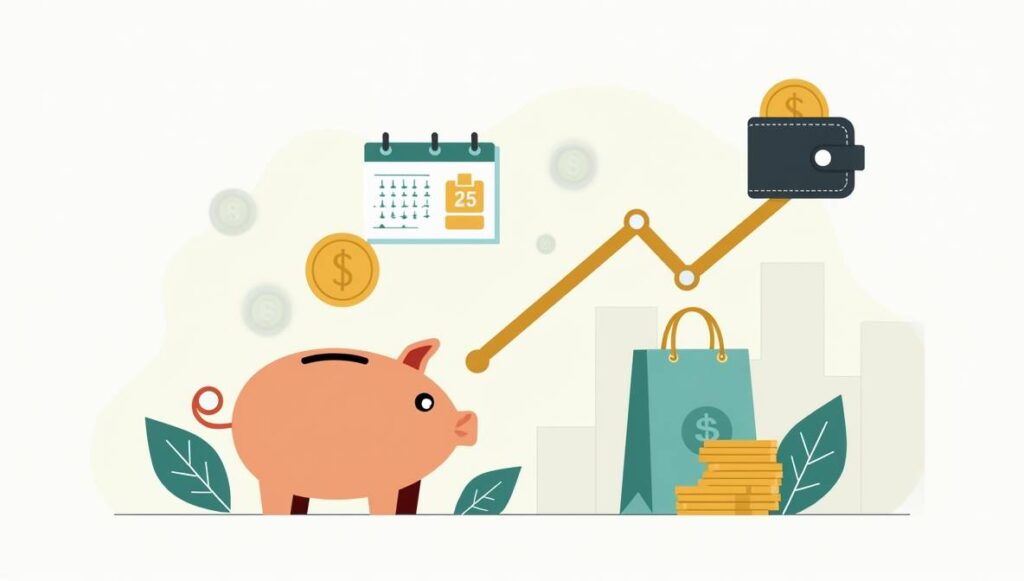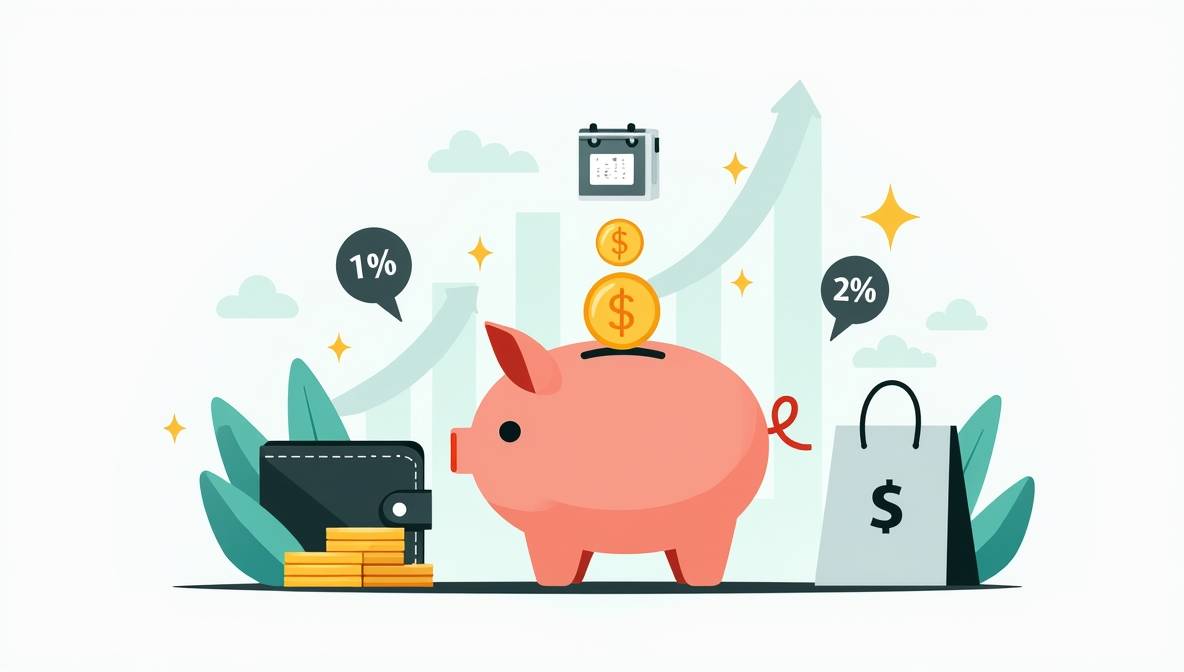Financial stability remains foundational for life success. Money arrives monthly yet evaporates without disciplined management. Saving money secures futures and builds lasting security. This guide presents ten actionable strategies to transform financial habits.
1. Plan Your Budget
Budgeting controls financial flow. Track income versus expenses using the 50/30/20 rule:
- 50% necessities
- 30% discretionary spending
- 20% savings/debt repayment
Sample Monthly Budget ($4,000 Income):
| Category | Allocation |
|---|---|
| Rent/Mortgage | $1,200 |
| Utilities | $300 |
| Groceries | $400 |
| Transportation | $350 |
| Debt Payments | $500 |
| Savings | $800 |
| Leisure | $450 |
Tools like Mint or You Need a Budget automate tracking. Review weekly to prevent overspending.
2. Embrace Recurring Deposits (RD)
Recurring Deposits enforce disciplined saving. Benefits include:
- Fixed monthly deposits ($50-$500+)
- Higher interest than savings accounts
- Penalty-free withdrawals post-maturity
Compare accounts:
| Account Type | Avg. Interest | Liquidity |
|---|---|---|
| RD | 5-7% | Low |
| Savings Account | 0.5-4% | High |
| Fixed Deposit | 6-8% | Medium |
Start small—even $25/month compounds significantly over 5 years.
3. Create a Shopping List
Impulse purchases derail budgets. Before shopping:
- Inventory household items
- Plan meals using weekly flyers
- Use digital lists (OurGroceries, AnyList)
Studies show list-users spend 17% less. Freeze credit cards during mall visits to curb temptations.
4. Explore Online Shopping
E-commerce offers systematic savings:
- Price-tracking tools (Honey, CamelCamelCamel)
- Cashback portals (Rakuten: 1-10% returns)
- Flash sales (Amazon Prime Day, Black Friday)
Verify seller legitimacy through Better Business Bureau ratings. Avoid “buy now, pay later” traps.
5. Manage Your Electricity Bill
Energy costs drain budgets. Implement:
- LED bulbs (75% less energy)
- Smart thermostats (saves 10-12% annually)
- Unplug idle devices (“phantom loads” cost $100/year)
Energy-Saving Impact:
| Action | Annual Savings |
|---|---|
| Line-dry clothes | $100 |
| Install efficient HVAC | $300 |
| Seal windows/doors | $200 |
Explore government rebates for upgrades.
6. Kick Bad Habits
Costly habits sabotage finances:
- Smoking: $2,292/year (pack/day)
- Daily coffee: $1,200/year
- Streaming subscriptions: $600+/year
Redirect these funds:
| Habit Eliminated | Monthly Savings | Annual Savings |
|---|---|---|
| Smoking | $191 | $2,292 |
| Coffee | $100 | $1,200 |
| 3 Subscriptions | $50 | $600 |
Use apps like QuitNow! or financial diaries to track progress.
7. Opt for Public Transportation
Car ownership averages $9,282/year (AAA). Alternatives:
- Public transit: $1,200/year average
- Cycling: $300/year maintenance
- Carpooling: 50% fuel savings
Calculate commuting costs using the Commuter Savings Calculator.
8. Budget-Friendly Vacations
Travel strategically:
- Off-season flights: 20-40% cheaper
- Home exchanges (HomeExchange.com)
- Loyalty programs (credit card points)
*Cost Comparison: 7-Day Vacation*
| Accommodation | Estimated Cost |
|---|---|
| Luxury Resort | $3,500 |
| Vacation Rental | $1,200 |
| Hostel | $500 |
Book flights 6-8 weeks early for optimal pricing.
9. Track Your Expenses
Visibility enables control. Methods:
- Apps: PocketGuard, GoodBudget
- Spreadsheets: Custom templates
- Envelope system (cash for categories)
Review weekly. Identify patterns—e.g., 30% overspending on dining out. Adjust next month’s budget accordingly.
10. Prioritize Saving Over Spending
“Pay yourself first” via automation:
- Direct deposit splits (divert 15% to savings)
- Micro-investing (Acorns, Stash)
- Emergency fund (3-6 months’ expenses)
Increase savings rates 1% quarterly. Start with $50/month if needed.

Building Financial Resilience
These strategies compound over time. Saving $300 monthly at 5% interest yields $20,000+ in five years. Consistency matters more than initial amounts. Reinvest windfalls like tax refunds. Explore scholarships for education costs or crypto investments for long-term growth. Financial freedom begins with today’s choices.

